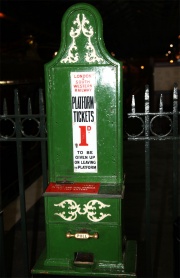London and South Western Railway




LSWR of Waterloo Railway Station, London
1834 The company was incorporated as the London and Southampton Railway.
1839 The name was changed to the London and South Western Railway.
Its ultimate network extended from London to Plymouth via Yeovil, Exeter and Okehampton with branches to Barnstaple, Ilfracombe and Torrington and Padstow and Wadebridge — a territory in which it was in direct competition with the Great Western Railway — and, via Basingstoke, Winchester and Southampton, along the Dorset coast to Bournemouth and Weymouth.
It also had a large number of branches which connected to places such as Portsmouth and Reading, and some joint railway operations with others — including the Somerset and Dorset Joint Railway.
In 1840 the 76.75 mile line ran from Vauxhall, London to Southampton with stations at Wandsworth, Wimbledon, Kingston, Esher and Hampton Court, Walton, Weybridge, Woking, Farnborough, Winchfield, Basingstoke, Andover Road and Winchester. Fares for the full one-way journey ranged from 20s in first-class to 7s in 3rd in the Goods train. [1]
1888 See Locomotive Stock June 1888
1892 The company absorbed the Southampton Dock Co.
1908 The company owns 857 miles of road, and partly with others, 23 miles more. [2]
Following the grouping in 1923, the L&SWR lines became part of the Southern Railway.
Among the most significant achievements of the L&SWR were the electrification of suburban lines, the introduction of power signalling, the development of Southampton Docks, the rebuilding of Waterloo Station as one of the great stations of the world and the handling of the massive traffic involved in the First World War.
- The major locomotive classes of the L&SWR's last engineer, Robert Urie, were continued and further developed by his successor on the Southern Railway, Richard Maunsell. Its General Manager Sir Herbert Ashcombe Walker became the Manager of the Southern Railway and Walker himself was succeeded in the latter post by Major Gilbert Szlumper, formerly his assistant on the L&SWR.
- The LSWR locomotive engineers.
- John Viret Gooch 1841 - 1850
- Joseph Hamilton Beattie 1850 - 1871
- William George Beattie 1871 - 1877
- William Adams 1877 - 1895
- Dugald Drummond 1895 -1912
- Robert Urie 1912-1923



















